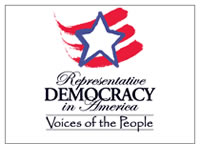Difference between Direct and Representative Democracy
Key Difference: In a direct democracy, the general public determines the laws and policies through which the people will be governed. Each citizen has one vote they can cast either in favor or against the law. Under a representative democracy, people elect representatives who are tasked with creating laws and policies. The elected representatives vote on the issue in lieu of the public. The elected representatives are supposed to reflect the will of the majority of the people.
 Democracy is a form of government in which all eligible citizens have an equal say in the social, economic and cultural decisions. Citizens vote to choose representatives who will run and make the hard decisions of the government. In a democracy, every person is equal, and they have the right to work to support themselves and to move up or down the social ladder.
Democracy is a form of government in which all eligible citizens have an equal say in the social, economic and cultural decisions. Citizens vote to choose representatives who will run and make the hard decisions of the government. In a democracy, every person is equal, and they have the right to work to support themselves and to move up or down the social ladder.
The term, democracy, originates from the Greek: dēmokratía, which stands for the rule of the people. According to Dictionary.com, democracy is a type of government by the people; a form of government in which the supreme power is vested in the people and exercised directly by them or by their elected agents under a free electoral system. It can be a state having such a form of government: The United States and Canada are democracies. It is a state of society characterized by formal equality of rights and privileges. It has political or social equality; a democratic spirit.
Democracy supports and promotes the idea of freedom of political expression, freedom of speech and freedom of press, among equal right for the citizens. Everyone is equal in the eyes of the law and government. It allows eligible citizens to have an equal say in the decisions, including proposal, development, and creation of laws, that affect their lives. Citizens can either do this directly or through elected representatives.
There are various types of democracies:
- Direct democracy – in which citizens have direct and active participation in the decision making of the government.
- Representative democracy – citizens remain the sovereign power but political power is exercised indirectly through elected representatives.
- Parliamentary democracy – a representative democracy where government is appointed by representatives.
- Presidential Democracy – the public elects the president through free and fair elections. The president serves as both the head of state and head of government controlling most of the executive powers. The president serves for a specific term and cannot exceed that amount of time.
- Constitutional democracy – a representative democracy in which the ability of the elected representatives to exercise decision-making power is subject to the rule of law, and usually moderated by a constitution.
- Hybrid democracies or semi-direct democracies – which combine elements of representative democracy and direct democracy.
In a direct democracy, the general public determines the laws and policies through which the people will be governed. Each citizen has one vote they can cast either in favor or against the law. Every citizen plays a direct and active role in a direct democracy, hence the name. Direct democracy is also sometimes called "pure democracy," as it is the purest form of democracy, in which people have the right to decide their laws and government.
There are various advantages of a direct democracy, including:
- All topics and issues are open.
- The people have the power.
- The people are responsible, not the political parties.
- The community is involved in the decision making.
- Politicians are answerable to the public.
- The public has control over Parliament and the direction of the country.
However, there are also certain disadvantages of a direct democracy, including:
- Not always the optimal choice for some people.
- Some people do not want to be involved.
- Many do not attend the meetings and assemblies, may not even vote.
- May become rigged in today’s society.
- The media and government may attempt to influence the decisions made by the people.
- Increase in referenda.
- Some people may be more politically active than others.
- The cost of holding an election for everything.
- People might have large crowds draw out just so that a vote may go in their favor.
 Due to these many disadvantages, most modern democracies are either a type of representative democracy or a hybrid democracy. In a direct democracy, every single member of the group has an equal say in every single decision. They must vote on every issue. However, this is not plausible on a day to day basis especially for a large group of people, such as for entire countries. So, countries opt to follow a representative democracy.
Due to these many disadvantages, most modern democracies are either a type of representative democracy or a hybrid democracy. In a direct democracy, every single member of the group has an equal say in every single decision. They must vote on every issue. However, this is not plausible on a day to day basis especially for a large group of people, such as for entire countries. So, countries opt to follow a representative democracy.
Under a representative democracy, people elect representatives who are tasked with creating laws and policies. The elected representatives vote on the issue in lieu of the public. The elected representatives are supposed to reflect the will of the majority of the people. They are not supposed to act out on their private agendas. However, that does sometimes happen. The representatives present a view to the public in order to get elected, but then they tend to support another view after their election, sometimes the completely opposite view.
Democracies are supposed to be a type of government which contrasts to forms of government where power is either held by one, i.e. a monarchy, or where power is held by a small number of individuals, i.e. oligarchy or aristocracy. However, at times the elected representatives start to abuse their power and take over the government, which then starts to resemble the oligarchy or aristocracy.
There are a number of countries that practice representative democracy. There are also a number of societies that practice with a combination of both types of democracy. For example, the United States of America, France, Switzerland and the Republic of Ireland. On a national level, these countries are representative democracy. However, on some state and local level they tend to practice limited direct democracy. The practices of limited direct democracy may include ballot initiatives, referendums, and recall of elected officials. Some issues, such as changes to the constitution or some local laws may be put a vote of the public. Or the public may vote to retract a previously passed law or policy.
Image Courtesy: mrdonn.org, nysba.org









Comments
first of all, HI CARALIE< HI MOM< AND HI PEOPLE. its an honor to recieve this award of finding EXACTLY what i need to ace this assignment.
Maryjoe
Thu, 09/04/2014 - 22:56
This helped a lot my pats r coming up soon I love this site I'll be here next time I have test very easy to understand I'm gonna get A on my pats thnks soooooooo much
Bailey
Thu, 06/19/2014 - 05:42
Pages
Add new comment